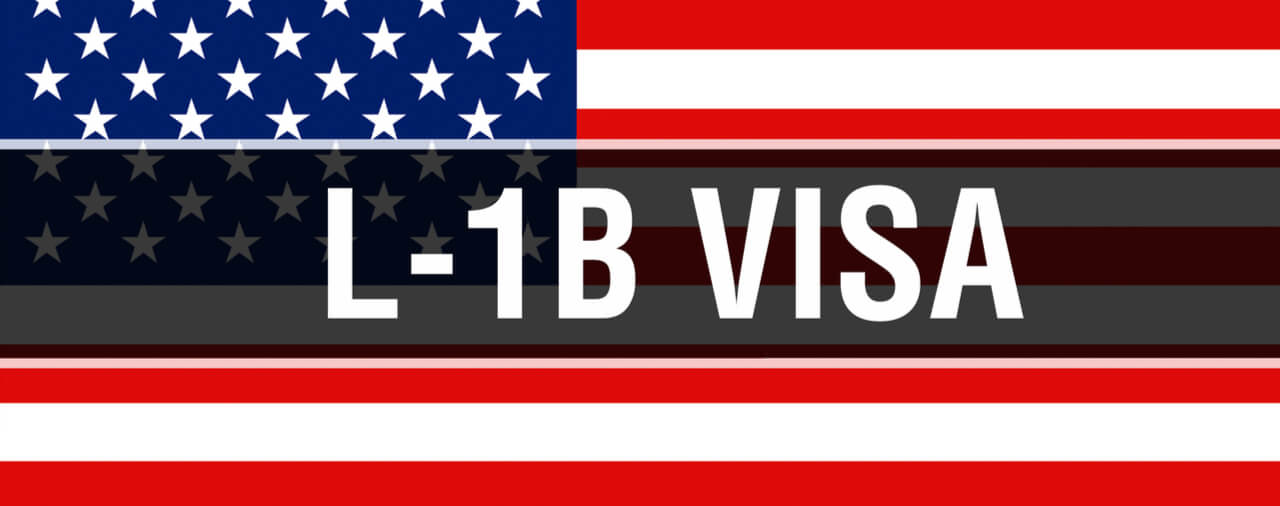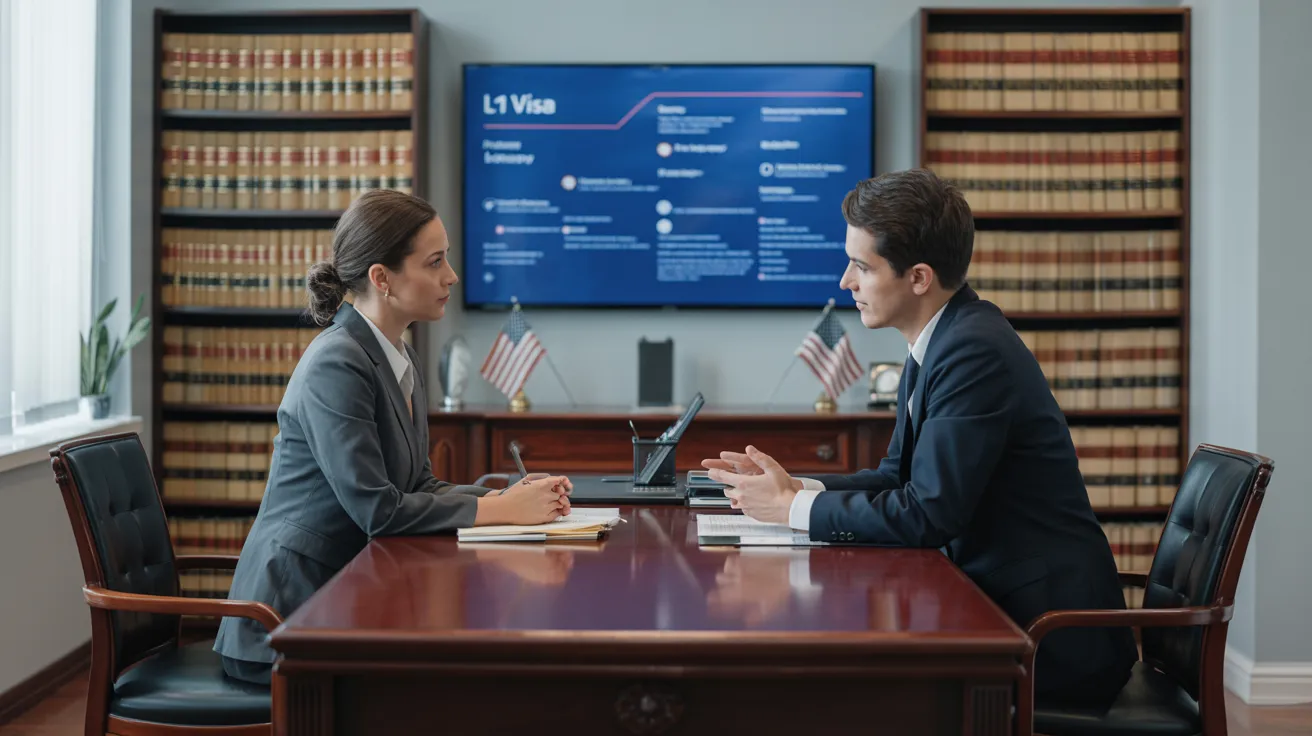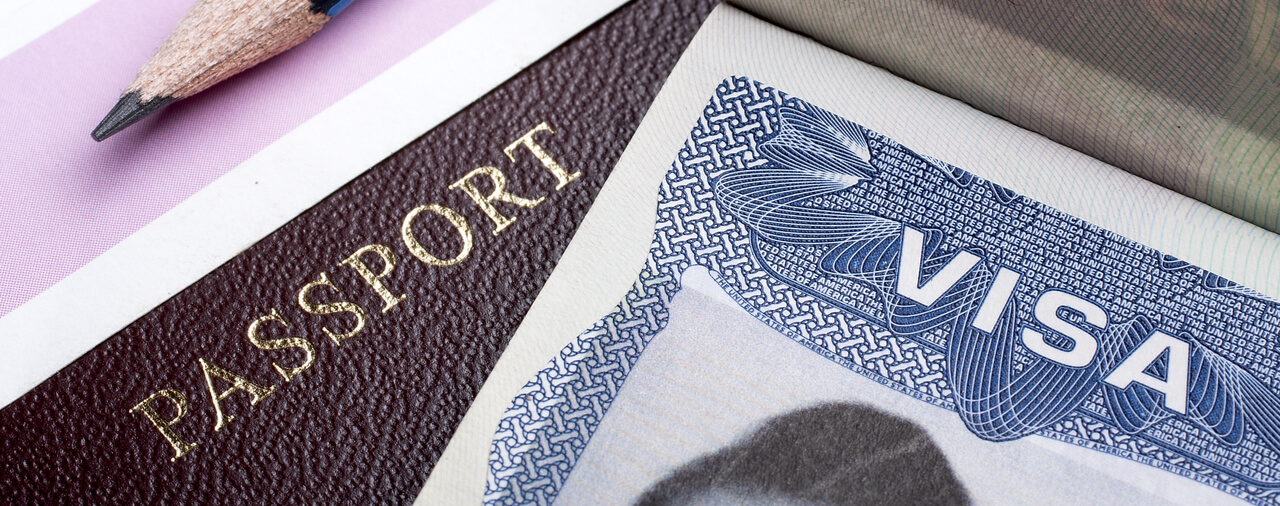Opening Opportunities: A Comprehensive Overview to the L1 Visa Process
The L1 visa procedure offers an important pathway for multinational business seeking to move crucial staff members across borders. Comprehending the subtleties of qualification criteria, the differences between L-1A and L-1B visas, and the details of the application process can significantly affect an applicant's success. Steering this complicated landscape is not without its obstacles, and careful focus to documents and company sponsorship is crucial. As we explore the essential components of this procedure, the techniques for conquering prospective barriers will certainly come to be apparent, exposing just how notified preparation can open up a globe of opportunities.
Understanding the L1 Visa
Understanding the L1 visa entails identifying its importance as an important device for international companies seeking to transfer competent workers between global workplaces. This non-immigrant visa category facilitates the activity of execs, managers, and specialized understanding workers to the USA, consequently enabling organizations to keep functional continuity and harness international talent successfully. The L1 visa is divided into 2 key classifications: L-1A for supervisors and executives, and L-1B for employees possessing specialized knowledge.The L1 visa offers a vital function in improving a firm's one-upmanship in the worldwide marketplace - L1 Visa. By enabling firms to move their crucial employees, services can assure that important projects are taken care of by certified individuals who are currently acquainted with the business's society and operational procedures. This inner transfer system not only cultivates understanding sharing however also promotes advancement and partnership throughout borders.Moreover, the L1 visa is frequently preferred for its relatively uncomplicated application process compared to various other visa classifications, as it enables double intent, permitting holders to go after permanent residency while on a short-lived job visa. This attribute makes the L1 visa especially appealing for both employers and staff members, as it streamlines the pathway for skilled specialists to establish long-lasting residency in the United States
Qualification Criteria
Qualification for the L1 visa rests on several crucial standards that guarantee both the employee and the company meet particular qualifications. This non-immigrant visa is designed for multinational firms to move employees from consular services to U.S. counterparts.Firstly, the employer needs to be a qualifying organization, that includes a moms and dad firm, branch, affiliate, or subsidiary of a united state service. The business needs to have been doing service for at the very least one year both in the U.S. and abroad. This ensures that the business has sufficient functional stability and a reputable presence.Secondly, the staff member has to hold a supervisory, exec, or specialized knowledge position. For L1A visas, the candidate should demonstrate supervisory or executive qualifications, while L1B visas concentrate on specialized expertise pertaining to the organization's products, services, or procedures. Furthermore, the worker must have benefited the foreign entity for at the very least one continuous year within the last three years prior to their application.Lastly, the worker's duty in the U.S. should line up with their previous position, ensuring that their skills and knowledge are leveraged for the company's advantage.
Types of L1 Visas
The L1 visa group consists of two key types created to assist in the transfer of workers within international companies: the L1A visa for supervisors and executives, and the L1B visa for employees with specialized understanding. Each type offers distinctive objectives and has particular qualification criteria.The L1A visa is customized for people that hold managerial or executive placements within a business. This visa allows high-level workers to move to a united state branch, subsidiary, or associate of the exact same company. Candidates for the L1A visa should show that they have actually been utilized in a supervisory or executive ability for at the very least one continual year within the previous three years before their application. In addition, this visa uses a longer duration of remain, initially approved for 3 years, with the opportunity of extensions for up to 7 years.In comparison, the L1B visa is intended for experts with specialized knowledge related to the business's items, solutions, or procedures. To qualify, candidates should show that their competence is essential to the organization which they have actually helped at the very least one continual year within the last three years in a duty that needed this specialized knowledge. The L1B visa is at first granted for 3 years, with extensions available for up to five years.Both visa types are crucial for firms looking for to boost their international procedures by leveraging experienced employees, thus promoting development and efficiency within the united state market.
Application Process
Steering through the L1 copyright procedure entails numerous important actions that should be thoroughly followed to ensure an effective end result. The process starts with the U.S. employer, who have to initially establish qualification by demonstrating a qualifying partnership with the foreign entity and confirming that the worker satisfies the details needs for the L1 visa classification being sought.Once eligibility is verified, the company initiates the process by filing Type I-129, the Petition for a Nonimmigrant Employee, with the United State Citizenship and Migration Services (USCIS) This form has to be gone along with by a detailed summary of the work responsibilities to be carried out, the business framework of both the U.S. and international entities, and the worker's credentials. It's vital to validate that all information is exact and full, as omissions or errors can result in hold-ups or denials.Upon approval of the I-129 application, the following action includes the staff member requesting the L1 visa at an U.S. consular office or consular office in their home nation. This stage requires the completion of Type DS-160, the Online Nonimmigrant copyright, and arranging an interview. During the interview, the candidate should offer evidence sustaining their certifications and the company's petition.After the visa is granted, the staff member can go into the USA to function in the designated function. Overall, mindful prep work and adherence to each step of the application procedure are crucial for a successful L1 visa outcome.
Called for Documentation

Essential Kinds Needed
Navigating the L1 Visa process calls for careful focus to the important forms and paperwork necessary for an effective application. The main form required is the Kind I-129, Application for a Nonimmigrant Employee, which need to be completed and submitted by the U.S. employer. This type outlines the information of the employment deal and the certifications of the employee seeking the L1 Visa.Alongside Form I-129, the candidate will certainly need to total Form I-539 if coming with member of the family are also getting visas. Additionally, the company should provide proof of the certifying relationship in between the united state entity and the foreign entity, usually demanding the submission of business records such as write-ups of incorporation or economic statements.Moreover, it is important to include the L Category Supplement to Form I-129, which specifies the kind of L Visa being requested-- either L-1A for managers and executives or L-1B for staff members with specialized understanding. Candidates must ensure that all kinds are signed and dated properly, as insufficient entries can lead to delays or denials. Correctly constructing these vital forms lays the structure for a smoother L1 copyright process.

Supporting Proof Needs
Sustaining paperwork is necessary for an effective L1 copyright, as it confirms the cases made in the request. Applicants should provide a series of papers to demonstrate qualification for the visa, which is categorized into 2 main types: proof of the certifying partnership between the U.S. and international entities and evidence of the applicant's qualifications.To establish the relationship, candidates should send documents such as corporate organizational charts, economic statements, and evidence of ownership. These records verify that the foreign company has a qualifying relationship with the united state employer, whether as a parent business, subsidiary, branch, or affiliate.For the applicant's credentials, crucial records include a comprehensive employment letter from the international employer, laying out the applicant's work title, responsibilities, and duration of work. Additionally, instructional qualifications, such as levels and diplomas, should be supplied to prove the applicant's expertise in the pertinent field.
Company Sponsorship Documents

Common Obstacles
Navigating the L1 visa procedure offers several usual difficulties that candidates need to be aware of. Secret concerns often consist of stringent paperwork requirements, prospective delays in handling times, and the requirement for strict lawful compliance. Recognizing these obstacles can aid candidates much better prepare and reduce dangers throughout their copyright journey.
Documents Requirements
The L1 copyright procedure frequently provides considerable difficulties connected to documents needs. Applicants should provide substantial documentation to establish eligibility, which can lead to confusion and prospective hold-ups. Key documents consist of proof of a qualifying connection in between the united state and foreign company, proof of the candidate's employment history, and in-depth information regarding the task function in the U.S.One common challenge is gathering sufficient evidence to show the nature of the qualifying relationship. Companies frequently struggle to present clear organizational graphes or economic statements that illustrate the link in between the entities. Additionally, guaranteeing that letters of support from companies accurately show the applicant's work responsibilities and certifications is crucial, as obscure descriptions can lead to denials.Another problem occurs from the requirement for detailed work descriptions that align with the L1 visa groups. Candidates need to articulate not just their present role however also their managerial or specialized expertise obligations clearly. This requires a thorough understanding of both the applicant's setting and the regulative language utilized in L1 applications.
Processing Dead Time
Experiencing delays in processing times is an usual obstacle dealt with by L1 visa candidates, often resulting in disappointment and uncertainty. Several variables add to these delays, including high application quantities, boosted analysis of applications, and management stockpiles within the U.S. Citizenship and Immigration Solutions (USCIS) Applicants might find that processing times can differ substantially depending on the solution facility managing their application, as each center has its own work and performance levels. Furthermore, the intricacy of the candidate's case, such as the demand for considerable documents or clarification, can better expand wait times.In some instances, issues connected to the candidate's current immigration condition or previous visa background might likewise cause added hold-ups, as USCIS might require additional testimonial or information. It is necessary for prospects to remain positive throughout this period, keeping open interaction with their companies and legal agents to address any type of prospective problems promptly.Understanding these processing time L1 copyright copyright difficulties can aid L1 visa applicants prepare for possible hold-ups and mitigate the influence on their shift and career strategies. Persistence and persistance are vital merits in maneuvering this elaborate process.
Lawful Conformity Issues
Numerous L1 visa applicants encounter legal conformity concerns that can complicate their trip towards acquiring the visa. Understanding and sticking to the certain laws established by the united state Citizenship and Immigration Solutions (USCIS) is essential. Usual obstacles consist of showing the certifying partnership in between the foreign and U.S. employers, in addition to verifying that the applicant possesses the requisite specialized knowledge or supervisory capacity.Additionally, candidates need to supply complete paperwork outlining their job duties, corporate structure, and economic feasibility of the united state entity. Poor or imprecise documents can bring about delays and even denials. Companies must likewise assure that they follow labor laws, consisting of wage and working condition criteria, which can impact visa eligibility.Another common concern involves maintaining conformity with the terms of the visa once approved. Modifications in employment condition, work duties, or business structure can require changes to the visa, which otherwise addressed quickly can lead to lawful problems. As an outcome, staying educated about compliance demands and seeking lawful advice when necessary is necessary to navigate the complexities of the L1 visa process efficiently.
Tips for Success
Success in the L1 copyright process usually pivots on careful preparation and interest to information. To boost your chances of authorization, start by completely understanding the qualification needs for both the L1A and L1B visa groups. Assess whether your placement at the business certifies as supervisory, exec, or specialized knowledge, as this classification notably affects your application.Next, collect substantial documentation that confirms your insurance claims. This includes organizational charts, comprehensive work descriptions, and evidence of the firm's operational structure. Clear and succinct proof of the qualifying connection in between the united state entity and the international entity is important. Confirm that all records are arranged realistically and presented in an expert way, as this mirrors your dedication and severity regarding the application.Engage the solutions of a skilled immigration attorney that focuses on L1 visas. Their proficiency can show indispensable, assisting you with facility laws and guaranteeing that all paperwork adheres to existing regulations. In addition, get ready for the interview by practicing solution to common questions and preparing to discuss your role and payments to the business comprehensive.
Regularly Asked Questions
Can Household Members Accompany the L1 Visa Holder?
Yes, member of the family of L1 visa owners, consisting of spouses and unmarried kids under 21, can come with the primary visa holder. They may also request L2 visas, which enable them to stay in the USA.
For How Long Can I Keep on an L1 Visa?
The L1 visa allows preliminary stays of as much as three years, with the opportunity of expansion. L1A visa owners may stay for an optimum of seven years, while L1B visa owners can stay for 5 years.
Can L1 Visa Owners Obtain a Permit?
Yes, L1 visa owners can get a permit. L1 Visa Requirements. They may seek permanent residency via employment-based classifications, commonly requiring sponsorship from their company, provided they meet the essential credentials and documents demands
What Happens if My L1 copyright Is Refuted?
If your L1 copyright is refuted, you may obtain a notice describing the reasons for rejection. You can look for to appeal the decision, reapply, or check out alternate visa choices based upon your situations.
Exist Any Travel Restrictions With an L1 Visa?
An L1 visa usually permits global traveling; however, re-entry to the united state is contingent upon preserving legitimate condition. Tourists need to ensure compliance with visa conditions to stay clear of issues upon return
Final thought
